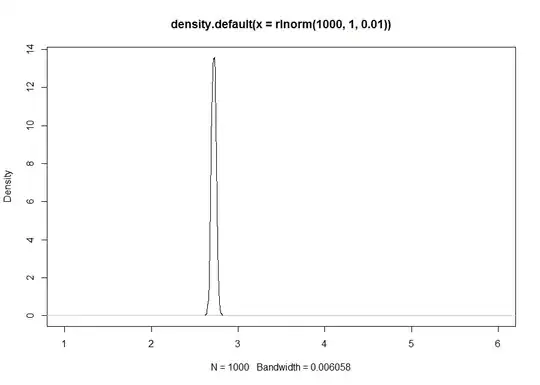Why does the density on the y axis sometimes have values greater than 1 if the curve is representing density?
See the example below where I use R's density() function to plot a density curve.
plot(density(rnorm(1000, 1, 0.01)))

Why does the density on the y axis sometimes have values greater than 1 if the curve is representing density?
See the example below where I use R's density() function to plot a density curve.
plot(density(rnorm(1000, 1, 0.01)))
